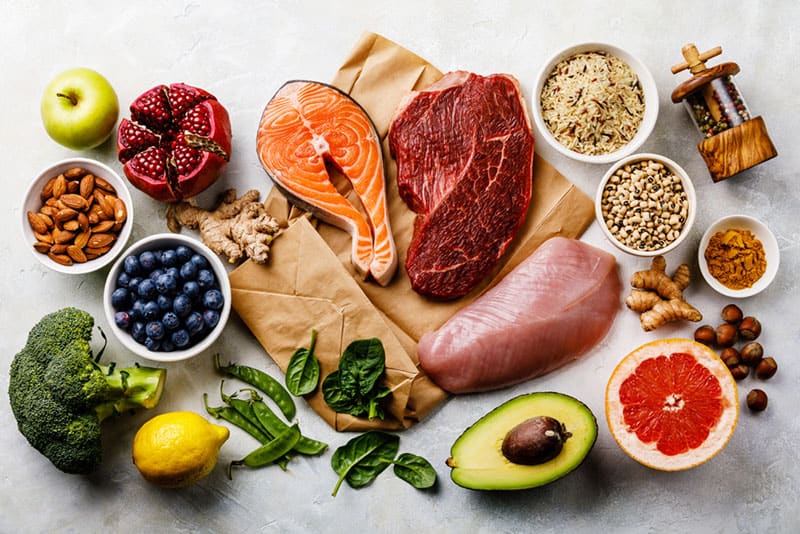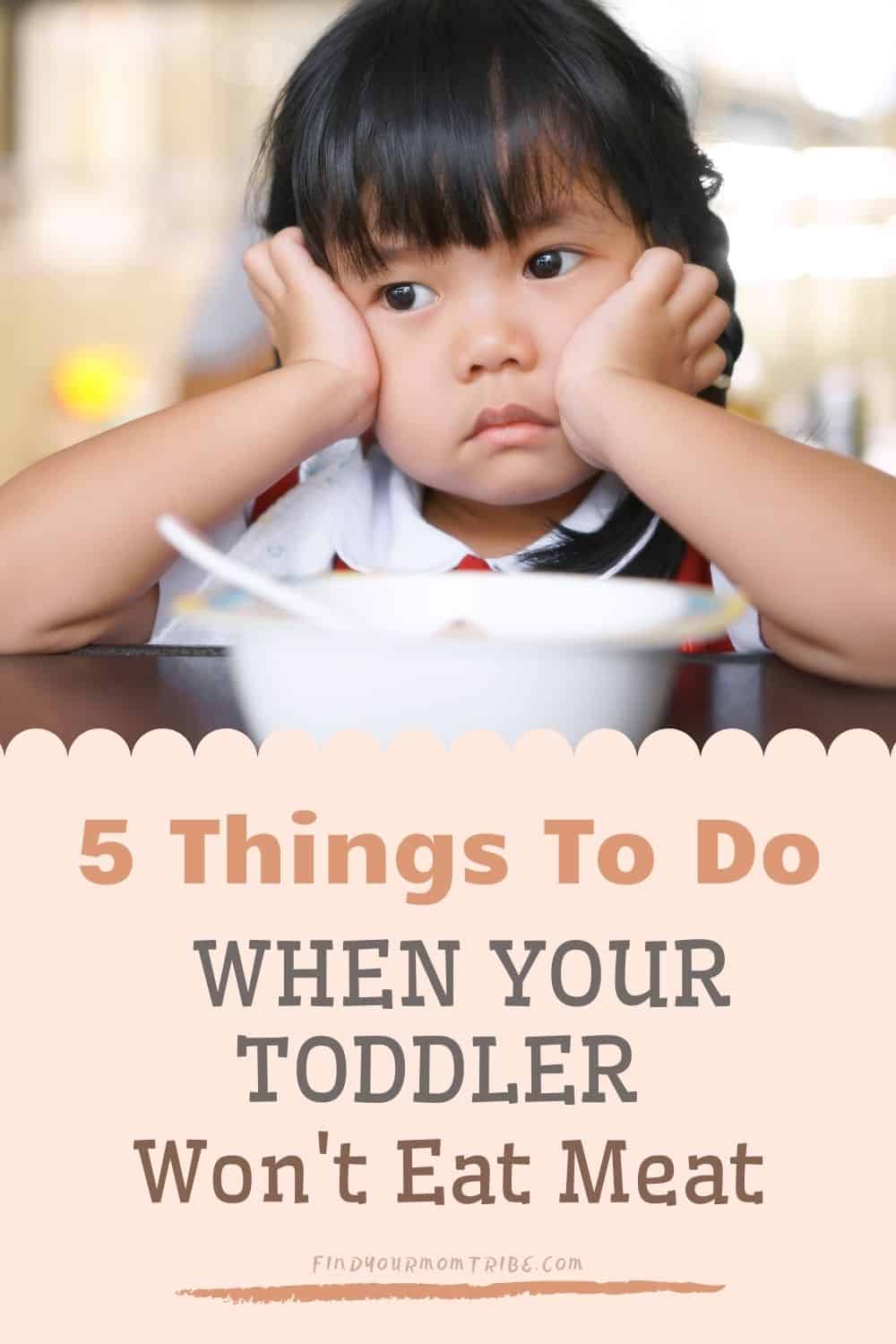All of the basic food groups are important in helping maintain a healthy and balanced diet. So what happens if, for instance, your toddler won’t eat meat or veggies?
When your toddler won’t eat meat or any of the other basic food groups, it usually boils down to it being a newly introduced food or they don’t like the flavor.
That said, the most common reason as to why kids don’t eat something is because of the texture.
It might sound like an odd claim, but that’s the reality of it. When introducing new foods, kids tend to go on how the food feels to chew.
If it’s not tough and stringy, and it ends up being tasty too, they’ll absolutely love the stuff.
On the other hand, if it tastes bad, or worse, if it’s tough or has an odd “crunch” to it, your kids may develop a food aversion instead.
That’s how you end up with so many kids becoming accidental vegetarians – at least temporarily – when they’re still young and exploring different foods and expanding their palate.
But, if you end up trying to force your kid to eat something just because you tell them so, don’t be surprised if you end up with spoiled food and a newly developed food aversion that might even end up becoming permanent.
But why meat in particular? Kids should like all sorts of meat, right? How can you avoid awkward meal times and family dinners then?
Well, what I found out may end up surprising you. Let’s get into the answers that you came here for in the first place.
How To Get Your Child To Eat Meat
There are a number of different ways in which you can get your child to eat meat and they’re all relatively simple to do.
Here are some of the most efficient ones:
1. See if your child is avoiding all types of meat

The first step is to identify if it’s just a specific type of meat that your child refuses to eat or if it’s every single one.
Odds are that the more dry and chewy the meat is, the less likely your child will want to eat it.
That’s why cooked a chicken breast, T-bone steak, or prosciutto aren’t their go-tos, but things that are moister and practically melt in the mouth or are easy to chew like chicken nuggets, hot dogs, fish, and sausages might be.
But, if you find your child not preferring any sort of meat, there are other ways.
2. Refine the meat into smaller pieces

If the issue is that the meat chunks are too big, you can always try making them smaller.
Mincing, dicing, or grinding the meat into smaller bits might make it easier to digest for your kids and harder to notice in food in general.
It’s because when the texture changes, the taste tends to become somewhat different to our brains since we don’t spend too much time chewing it and get to savor the initial burst of flavor that hits us.
So sticking to some pulled pork, ground beef, meatballs, or other small pieces of meat might just be the method that you need to get your little one to start eating meat.
3. Mixing meat with other foods

Going off of the second method, sometimes meat is much easier to accept when it isn’t the main dish, but rather a complementary part thereof.
Think spaghetti and meatballs, mashed potatoes and gravy with meat chunks, beef stew/soup, or a quesadilla with bits of ground meat tossed inside.
Usually it’s something that contains a high amount of carbs paired with the meat as a flavor enhancer. Think of it as a more advanced version of sandwiches that you get to bring out for family meals.
While a decent method, it’s one that usually has the least amount of success as the kids can still see the meat and they might end up being put off by it.
4. Try going for alternatives

If none of the above methods work, and your toddler won’t eat meat, then you might need to temporarily stick to alternatives that can be found in other food groups.
For instance, depending on the child’s weight, his body will need different amounts of protein.
To get an estimate of how many grams of protein your child would need for his daily intake, take his weight and divide it by two.
While not exactly scientific, it is a rough estimate and it’s how I managed to quickly figure out how much my baby boy needed when he initially refused to eat meat.
That’s why I had to go for alternatives like milk or peanuts and peanut butter to cover the estimated daily intake. I did the same for the iron and the fats, finding it in other sources.
It’s not easy, but if nothing else seems to work, it’s your best bet.
EXTRA: Vitamin C is important
When considering your child’s daily nutrition facts, the thing that is ubiquitous in any diet is the presence of vitamin C.
That’s because vitamin C helps to bond all of these other nutrients in the body much easier, making sure they’re all properly absorbed. So always have some source of it present in your child’s daily diet.
Orange juice, strawberries, sweet peppers, sweet potatoes, and the like usually end up being the default go-to.
5. Talk to a professional

If you’re still concerned that none of the toddler food you’re giving your little one is working or if your preschooler still refuses to eat meat, then you might want to register an appointment with a nutritionist, your child’s pediatrician, or a registered dietitian.
Present the case to them and they’ll be able to discern more in-depth methods of nutrition or create specific diets that you can follow to give your child all the nutrients he needs to grow up healthy.
RELATED: What is Feeding Therapy For Children And How Does It Work?
Why A Picky Eating Toddler Sometimes Won’t Eat Meat
Well, as I’ve mentioned earlier, the reason why your young picky eater tends to stray away from some forms of meat comes down to a few factors, all of which are tied to the five senses.
The sense of sight

While one of the least relevant, it’s one that creates an initial bias towards food for all humans – and kids in particular.
If a dish isn’t visually appealing, they’ll usually get this preconceived idea that it’s automatically something that’s bad for them or that tastes bad, so they won’t want to consume it.
The sense of hearing

A seemingly irrelevant factor, but some kids (and adults) are sensitive to the sounds their food makes when eating.
This one only has relevance in crunchy and crispy foods, as people tend to enjoy hearing that crunch, which is why potato chips or fried foods end up being favorites for many people.
The sense of smell

A key sense in deciding whether a food is good or not – not just for a two-year-old child, but for adults as well – is the smell.
If there’s no captivating aroma to a food, something that is pleasing to us, chances are we’re going to stay away from it.
It’s just basic human nature at that point: We dislike things that are smelly, but like those that have a pleasing aroma.
And if a food smells great, your kids are more likely going to be willing to give it a try regardless of other factors.
The sense of taste

This sense is the most important factor when a child is judging new food for the first time.
If a certain food tastes good, your little one is going to be all over it for a long while.
And, if it doesn’t, well, it’s likely that you’ll have your child refuse trying it again in the near future, no matter how much you end up preaching about healthy food habits and the like.
The sense of touch

This one might seem like an oddity on the list, but believe me when I say that it plays a crucial role.
And this one specifically relates to the texture of the food – how it feels for your three-year-old daughter or five-year-old son to chew that piece of cooked turkey or those lentils.
RELATED: When Are Lentils For Baby Okay? Health Benefits And Recipes
Kids don’t like having to put too much effort in eating, so the easier something is to work through while still being tasty and smelling good, the better the chances of it becoming a staple in your little ones eating habits.
So, don’t be surprised if your child doesn’t end up liking a specific type of food in one form, but adores it in another.
For instance, when I was young, I couldn’t stand large bits of fresh onions in anything.
Even now I don’t favor foods that contain it, so much so that it ends up triggering my gag reflex whenever I feel it crunch under my teeth.
But, when it’s minced, thinly sliced, or cooked to the point where it loses that odd texture, I have no issues with it and can happily go through meal after meal containing it.
The same applies to any other people, and especially children who are pickier eaters than most adults.
The 5 Basic Food Groups

You have 5 basic food groups:
1. Grains
2. Vegetables
3. Fruits
4. Dairy
5. Meat
Having a good variety of foods belonging to all 5 food groups is key to helping young children develop healthily.
This is mainly due to the nutrients that are prevalent in a specific food group. In the case of meat, it’s protein.
Sure, nowadays there are alternatives to almost every nutrient in almost every other food group, but the point of it is availability and variety.
Nobody likes having to eat the same thing day in and day out as eventually you’ll get bored of it.
Plus, many nutritionists will say that it’s good to vary the old diet up every now and again to expand your palate so you can enjoy a wider variety of foods.
For instance, getting enough protein or iron for the day is easy when you eat meat, but if a toddler won’t eat meat, you have to rely on alternative sources of protein (peanut butter, some greens, etc.) or iron (spinach, lentils, chickpeas).
While the variety is there, you’ll need to eat a lot more of that food to satisfy the daily intake of a specific nutrient than when going straight to the primary provider.
Allergies and food intolerances stand as exceptions, but those people don’t really have a choice. Your kids do.
It’s a similar thing for those who refuse to eat any animal products (vegans) due to cruelty awareness and the like, but kids shouldn’t be subjected to that lifestyle until they can consciously choose for themselves.
Things That Kids Like To Eat And Why

While this is a widely diverse topic given how kids can develop vastly different diets at a young age, there is one thing that every kid will always like to eat no matter what, and that’s carbs.
Why carbs in particular? It’s because glucose (which is a carbohydrate) is one of the key nutrients for a growing child because it helps fuel the brain directly – and a 3-year-old’s brain consumes about 4 times as much glucose as the average adult brain does.
And kids need all that energy in order to not only develop physically but also process all of the new information that enters their pretty little heads when they’re out and about.
That’s why kids prefer going after candy so much because it contains a massive amount of carbs and helps give them that jolt of energy that they need.
Mind you, this doesn’t mean that you should only feed them candy. That’s bad for them due to the presence of so many other unhealthy chemicals found inside.
The 5 basic food groups thankfully have foods that contain a lot of carbohydrates that are good for you, and they’re some of the most common foods as well, like:
- bread
- potatoes
- corn
- cereal
- some fruits
- milk
- legumes
As you can see, it’s not hard to find an alternative, so make sure to always have some carbs with your young child’s meal, as it’ll help him accept other foods a lot easier too.
In Conclusion
It’s not the end of the world if your toddler won’t eat meat initially. It might only be a temporary thing and an aversion that’ll fade away over time as his palate expands further.
Plus, there are plenty of tricks to circumvent the senses so your child can enjoy meat without even knowing it’s there.
And it all else fails and he still outright refuses, there are always alternatives you can rely on in the other basic food groups.
Just make sure that he always gets his daily intake of nutrients and vitamins and you shouldn’t have any problems during his young life.
Like this post? Please share or pin it for later. You can also stay in the loop and follow us on Facebook, Instagram or Pinterest.

This post contains affiliate links. Please see our full disclosure for more info.

